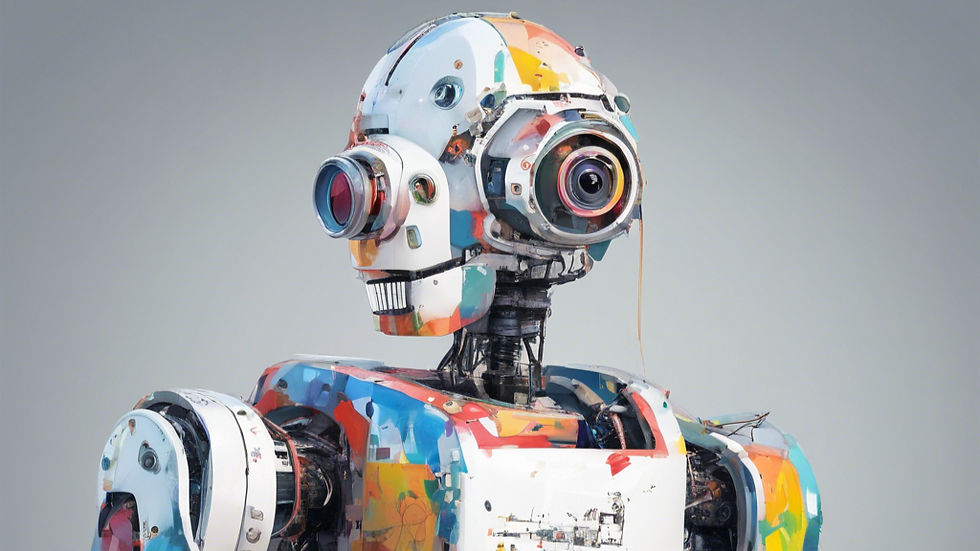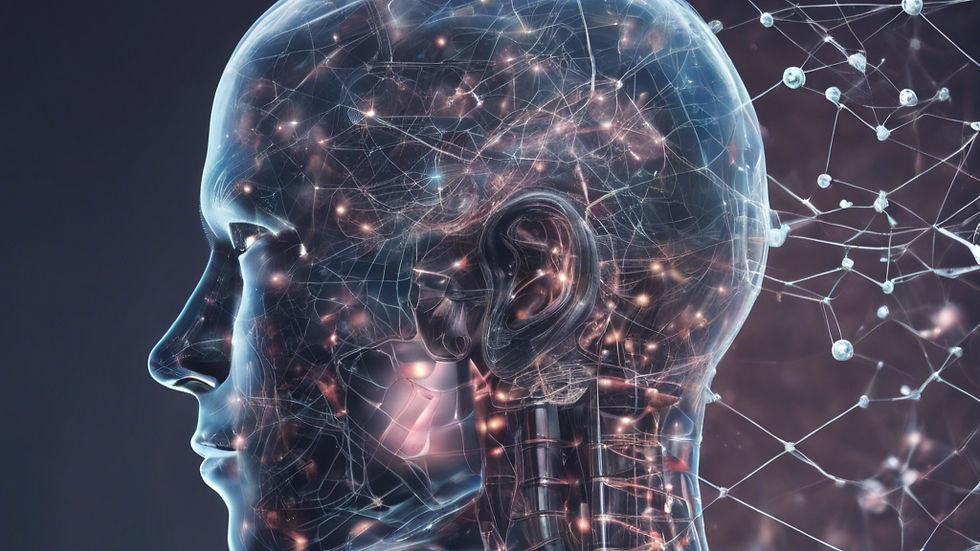The Transformative Power of AI: Industries and Businesses It Will Impact Most Positively
- Juliet Wilder
- Sep 1, 2024
- 5 min read
Artificial intelligence (AI) is reshaping the global economy, revolutionizing industries, and transforming how businesses operate. Its ability to process vast amounts of data, identify patterns, automate processes, and simulate human intelligence has created unparalleled opportunities for growth and innovation. Below is a comprehensive exploration of the industries and businesses that AI is poised to impact most positively, providing insights into how these transformations are driving value and progress.

The Transformative Power of AI:
1. Healthcare and Medicine
1.1. Diagnostics and Personalized Medicine
AI is revolutionizing how diseases are diagnosed and treated:
AI-powered tools analyze medical imaging (e.g., X-rays, MRIs) with precision, identifying conditions like cancer, cardiovascular issues, and neurological disorders earlier than traditional methods.
Machine learning algorithms enable personalized treatment plans by analyzing genetic data, patient history, and real-time health metrics.
1.2. Drug Discovery and Development
The pharmaceutical industry is benefiting significantly from AI:
AI models identify potential drug candidates faster and more cost-effectively by simulating chemical interactions and predicting efficacy.
By shortening the drug development timeline, AI accelerates the availability of life-saving medications.
1.3. Virtual Health Assistants and Telemedicine
AI-powered virtual assistants provide instant medical advice, schedule appointments, and manage chronic conditions. In telemedicine, AI ensures accurate diagnostics and enhances doctor-patient interactions by analyzing symptoms and recommending next steps.
2. Retail and E-Commerce
2.1. Personalized Shopping Experiences
AI transforms the retail landscape by offering tailored recommendations:
AI-driven recommendation engines analyze customer behavior, preferences, and purchase history to suggest products, increasing conversion rates.
Dynamic pricing algorithms adjust prices based on demand, competition, and inventory levels.
2.2. Inventory Management and Supply Chain Optimisation
Retailers use AI to predict demand, optimize inventory, and reduce waste:
Machine learning models forecast sales trends and seasonal demand patterns.
Autonomous systems streamline supply chain logistics, reducing delivery times and costs.
2.3. Customer Service and Chatbots
AI chatbots handle customer inquiries 24/7, improving satisfaction while reducing operational costs. These bots can process natural language, resolve complaints, and provide support in multiple languages.
3. Manufacturing and Industry 4.0
3.1. Smart Factories
AI-powered robotics and IoT sensors enable real-time monitoring and optimization of manufacturing processes:
Predictive maintenance minimizes downtime by identifying and addressing equipment issues before they occur.
Automated quality control ensures product consistency and reduces defects.
3.2. Supply Chain Automation
AI enhances efficiency in procurement, logistics, and inventory management:
Algorithms optimize shipping routes and manage inventory levels to reduce waste and costs.
Autonomous vehicles and drones expedite delivery processes.
3.3. Customization and Efficiency
AI enables on-demand manufacturing and mass customization by analyzing customer preferences and adjusting production lines accordingly.
4. Financial Services
4.1. Fraud Detection and Risk Management
AI strengthens financial security by detecting fraudulent activities in real-time:
Machine learning models identify unusual patterns in transaction data, flagging potential fraud.
AI evaluates credit risk by analyzing applicant data more comprehensively than traditional methods.
4.2. Algorithmic Trading
AI-powered algorithms execute trades at optimal times, analyzing market trends and historical data to maximize returns.
4.3. Personalized Financial Planning
AI-driven tools provide tailored financial advice, helping individuals and businesses manage budgets, investments, and long-term goals.
5. Education and E-Learning
5.1. Personalized Learning Paths
AI enhances education by adapting to individual learning needs:
Adaptive learning platforms adjust content difficulty based on a student’s progress and understanding.
AI-powered tutors provide real-time assistance, enabling students to grasp complex concepts.
5.2. Accessibility and Inclusion
AI bridges educational gaps by providing tools for differently-abled learners:
Speech recognition and text-to-speech technologies assist students with visual or hearing impairments.
Real-time translation tools make learning materials accessible across languages.
5.3. Administrative Automation
AI reduces the administrative burden on educators by automating tasks like grading, attendance tracking, and scheduling.
6. Transportation and Logistics
6.1. Autonomous Vehicles
Self-driving cars, trucks, and drones are transforming the transportation industry:
AI systems in autonomous vehicles enhance safety, reduce accidents, and improve traffic management.
Autonomous delivery drones and robots expedite logistics in e-commerce and retail.
6.2. Route Optimization
AI improves logistics efficiency by optimizing delivery routes, reducing fuel consumption, and minimizing delays.
6.3. Predictive Maintenance
In aviation, shipping, and rail industries, AI predicts mechanical failures, ensuring timely maintenance and reducing downtime.
7. Energy and Utilities
7.1. Smart Energy Management
AI optimizes energy consumption by analyzing usage patterns and predicting demand:
Smart grids powered by AI balance energy supply and demand efficiently, integrating renewable energy sources like wind and solar.
AI-enabled home automation systems manage energy usage, reducing costs for consumers.
7.2. Renewable Energy Optimisation
AI enhances the efficiency of renewable energy systems:
Predictive models improve wind turbine and solar panel performance by analyzing weather data and system output.
AI optimizes energy storage and distribution, reducing reliance on fossil fuels.
7.3. Environmental Monitoring
AI-powered sensors monitor air and water quality, aiding in pollution control and conservation efforts.

8. Entertainment and Media
8.1. Content Personalisation
Streaming platforms like Netflix and Spotify use AI to recommend content based on user preferences, keeping audiences engaged.
8.2. Creative AI
AI tools generate music, artwork, and video content, enabling creators to experiment with new ideas and formats.
8.3. Media Analytics
AI analyzes audience data to guide content production, ensuring it resonates with target demographics.
9. Agriculture and Food Production
9.1. Precision Farming
AI-powered tools monitor soil health, weather conditions, and crop health:
AI predicts optimal planting and harvesting times.
Autonomous machinery performs tasks like planting, watering, and weeding efficiently.
9.2. Food Supply Chain Optimisation
AI reduces food waste by optimizing logistics and predicting supply-demand trends.
9.3. Livestock Management
AI systems monitor livestock health, ensuring timely interventions to prevent disease outbreaks.
10. Public Sector and Governance
10.1. Smart Cities
AI powers smart city initiatives by optimizing traffic flow, energy usage, and public services:
AI-driven traffic management systems reduce congestion and emissions.
Predictive models improve public safety by analyzing crime patterns.
10.2. Policy and Decision-Making
AI assists governments in analyzing data for informed policy-making:
Predictive analytics guide economic planning and disaster response strategies.
AI enhances citizen engagement through chatbots and online services.
10.3. Defense and Security
AI strengthens national security by analyzing surveillance data, detecting cyber threats, and improving defense systems.
11. Real Estate and Construction
11.1. Property Valuation and Market Analysis
AI analyzes market trends and property data, providing accurate valuations and investment insights.
11.2. Smart Construction
AI optimizes construction processes, enhancing safety and efficiency:
Drones and robots perform inspections and labor-intensive tasks.
AI-powered design tools optimize architectural planning and resource allocation.
12. Science and Research
AI accelerates research across fields by analyzing large datasets and simulating complex systems:
AI contributes to breakthroughs in fields like genomics, astrophysics, and material science.
AI-driven simulations aid in understanding climate change and predicting natural disasters.

Conclusion
The Transformative Power of AI? Artificial intelligence is a transformative force that positively impacts industries ranging from healthcare and education to energy and entertainment. Its potential to automate processes, enhance decision-making, and unlock innovation makes it indispensable for modern businesses and societies. As AI continues to evolve, its ability to address global challenges, drive economic growth, and improve quality of life underscores why it is one of the most significant technological advancements of our time. By embracing AI responsibly and equitably, industries can harness its power to build a better future for humanity.



